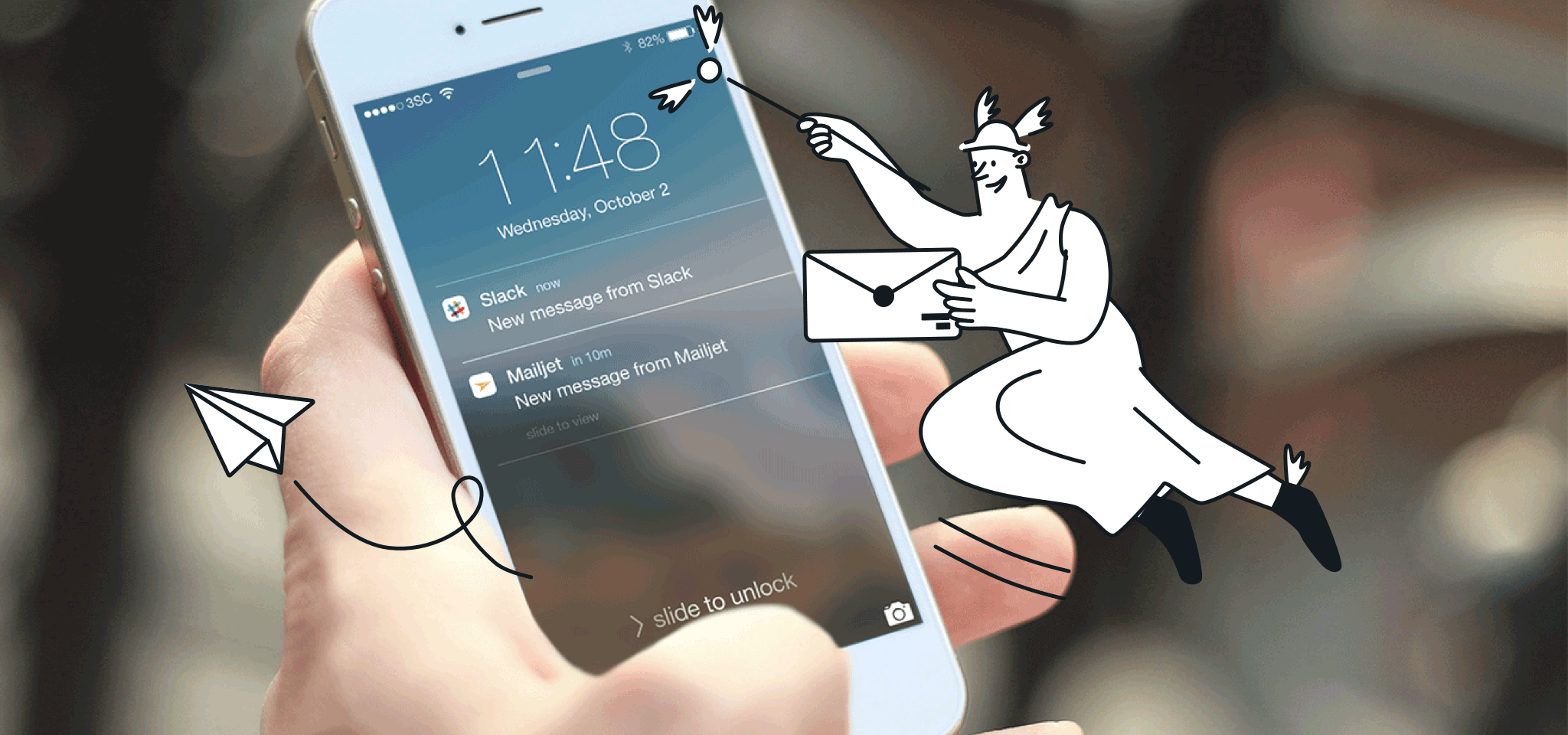Home
The Mailjet Blog
Email best practices
6 Ways Transactional Emails Provide a Great Marketing Opportunity
Email best practices
How transactional emails affect customer engagement levels
Messages like order confirmation emails or password resets provide an ideal opportunity for subtle marketing. We’ll show how transactional emails can be a friendly nudge toward a website visit or another purchase.

PUBLISHED ON
All businesses majorly focus on acquiring new customers. They aim to ensure that the customers remain loyal to them and don’t choose their competitors. However, these businesses tend to forget about the newly acquired customers until it's time to lure them into making another purchase.
But, after the conversion, what do we do? Companies can’t afford to sit back and relax in an age where consumer expectations are high. Once an individual becomes your customer, it's time to develop a retention strategy and the transactional email experience.
Table of contents
1. Emails that match a brand’s website design
2. Speed of email delivery
3. Emails that are easy to navigate
4. Multiple emails that update the user at each stage
5. Connection
6. Personalization
What role do transactional emails play in a marketing strategy?
Types of transactional emails like a password reset or an order confirmation email provide an ideal opportunity for subtle marketing. In addition to listing pertinent information for the recipient – like order information, a shipping notification, or an email list opt-in confirmation – a transactional email can be leveraged to drive customers to the website or make another purchase.
The key to email marketing in an automated email is being helpful without inundating the recipient with pushy sales tactics. You can do that by upselling or cross-selling related items at the end of the message in an understated manner. Notification emails also offer the chance to improve brand recognition and further build loyalty in your customer base.
Knowing the importance of transactional emails
In the age of ecommerce, customers expect an email after a purchase or other transactions. Once they decide if they want to buy something or sign up for a newsletter, a transactional email gives them the reassurance they're all set. Because of the vital information they contain, transactional emails have higher open rates than other types of emails.
As transactional emails significantly drive customer engagement, it's essential to pay close attention to their design and content. Using graphics and photos that visually express your brand's theme and avoiding basic black and white text can set your company apart from others. Since loyal customers can be some of the best referral sources, promoting a loyalty program or asking for a review is another way to keep them involved.
What aspects would lead to a dissatisfactory interaction?
As marketers, it’s important to not only know what your customers might like but also what makes their experience unpleasant. Here’s a list of don’ts to consider when drafting an email:
Making spelling, grammar, and language mistakes
Adding sensitive information
Optimizing the email in a way that takes longer than usual to reach the customers’ inboxes
Hitting the SPAM box rather than the inbox
Appearing as a “promotion” by Gmail or not as a “focused email” by Outlook
What do customers want when it comes to transactional emails?
Now that you know what not to do, let’s learn what customers want in their emails.
1. Emails that match a brand’s website design
In many organizations, transactional emails are managed by the technical team, whereas marketing emails are managed by the marketing team, which is the first challenge. This leads to a disconnect between the look and feel of transactional emails as opposed to marketing emails.
Marketers focusing on customer retention must collaborate with their technical counterparts to ensure a seamless email experience. According to Mailjet’s research study, 12% of consumers prefer transactional emails that match the brand's website.
2. Speed of email delivery
Presently, customers want to see a confirmation email as soon as they have purchased something from you. Technological advancements have impacted both brands and consumers. If brands have taken the step to make developments in how they carry out operations, so have customers. They’ve rather gone a step ahead by demanding services like fast delivery, satright-to-the-point messaging, and even timely updates.
There’s a short time frame in which our email recipients get frustrated, so how can you minimize the impact? You can monitor and rectify issues at your end to limit revenue and business operational impact risk with features like webhooks, enabling you to track email events in real-time.
3. Emails that are easy to navigate
Next up is how easy the experience is for the customer. 28% of consumers look for emails where they can easily find the message they’re looking for or the information you need to provide them with to enhance the journey. Ensure your emails are readable and simple to navigate. You can do this by only providing the required information at that stage and following up with a series of emails that offer additional details.
4. Multiple emails that update the user at each stage
We found that 36% of consumers want to be continuously informed, with updates at each stage of the experience. Some ecommerce retailers get this right with their post-purchase life cycle, sending emails to confirm the order, dispatch, and delivery.
But what can other industries learn from this? What steps could you break your experience down to? Events and entertainment companies can deploy the same logic to their events if they’re issuing tickets and go one step further by offering helpful tips and suggestions throughout the customer journey.
Travel companies, too, leverage this as customer satisfaction is imperative for a repeat booking. Financial services companies can also adopt this; for example, banks could advise companies when their credit card statement is due, paid, or even when the limit is reached.
5. Connection
While the core of a transactional email is providing relevant information, you can also use them to connect with your audience. Instead of simply listing order details in a basic, straightforward fashion, forming an emotional connection with customers can convert them into brand advocates. You can do that by showing an interest in customer needs and offering to help whenever the need might arise.
Connecting with customers in a transactional email demonstrates a genuine concern for their satisfaction and well-being and can set your brand apart from the competition. Sometimes, ecommerce can feel cold and impersonal due to the lack of human interaction, so working to emotionally connect can go a long way toward improving the customer experience.
6. Personalization
When a customer makes a purchase or signs up for a newsletter, they've chosen your company among various other organizations. Sending them a personalized transactional email makes them feel valued and acknowledged and shows appreciation for them as individuals instead of having a detached tone. Some ways to add a personal tone to a transactional email include using the recipient's first and last name.
Additionally, you can add unique discounts for items they viewed earlier or offers that apply to items that may interest them. Overall, personalized transactional emails add a human touch to the typically distant feel of internet purchases.
Wrapping up
With many consumers contemplating the idea to stop shopping from their chosen brands following a negative transactional email experience, it's safe to say that these business-critical emails are imperative for true customer loyalty.
So, what are the six steps you should take to ensure you get these emails right? You should:
Ensure there are no spelling or grammar mistakes
Not include sensitive data
Give your emails the same look and feel as your website
Create emails that are easy to navigate
Monitor sending anomalies for slow sending speeds and delivery issues
Consider breaking your email down into a sequence of emails
If you’re ready to make your transactional emails great and get the most out of them, at Mailjet, we’re ready for you.
You can always find great marketing ideas to turn your transactional emails into more efficient ones. Also, if you’ve already implemented these tips or your transactional experience has been innovative, share it with us on Twitter!
Transactional Email Services
Transactional emails are something everyone in a business can have a hand in. If you're a marketer trying to create beautiful transactional emails - you need to be able to roll out your program quickly. Choosing a transactional email service provider is important, and this is where Mailjet and Mailgun can help.








